Equipment
Brush
The brush is used to remove chalk from holds and make it easier to hold onto. Indoor climbing gyms may have poles with brushes attached to them for holds higher up. Smaller brushes can be bought to remove chalk from climbing shoes or holds closer to the ground.
- Chalk is used on the hands because chalk applies more friction than sweat. However, when it comes to holds or climbing shoes, chalk applies less friction than the sandpaper texture of a hold or the rubber from a climbing shoe. This is why climbers brush chalk from holds and climbing shoes while still using chalk for their hands.
Chalk bag
A bag to hold a climber’s chalk.
Chalk
Helps absorb sweat from the hands so that the climber can apply more friction. There are different types of chalk such as blocks, loose, liquid, and chalk balls.
- Blocks: A literal block of chalk. Climbers can break it down into their preferred consistency.
- Loose: Already broken-down chalk.
- Liquid: Chalk in a liquid form. When it is squeezed and spread in a climber’s hands, it starts to dry.
- Chalk balls: A pouch with chalk in it. Chalk is not spilled from the pouch easily, which makes it a cleaner option. However, it is harder to cover a climber’s hands entirely.
Climbing shoes
A type of shoe specifically for rock climbing. The rubber helps climber’s use footholds more reliably. There are three different categories of climbing shoes as well as two main types of soles. Many climbing shoes can fall in between these categories as well.
-
Neutral: These shoes are flatter.
They are more popular for beginners or climbers with a lot of climbing experience since they are more comfortable.
The disadvantage is that the toes are more rounded meaning that they are not great on small holds.
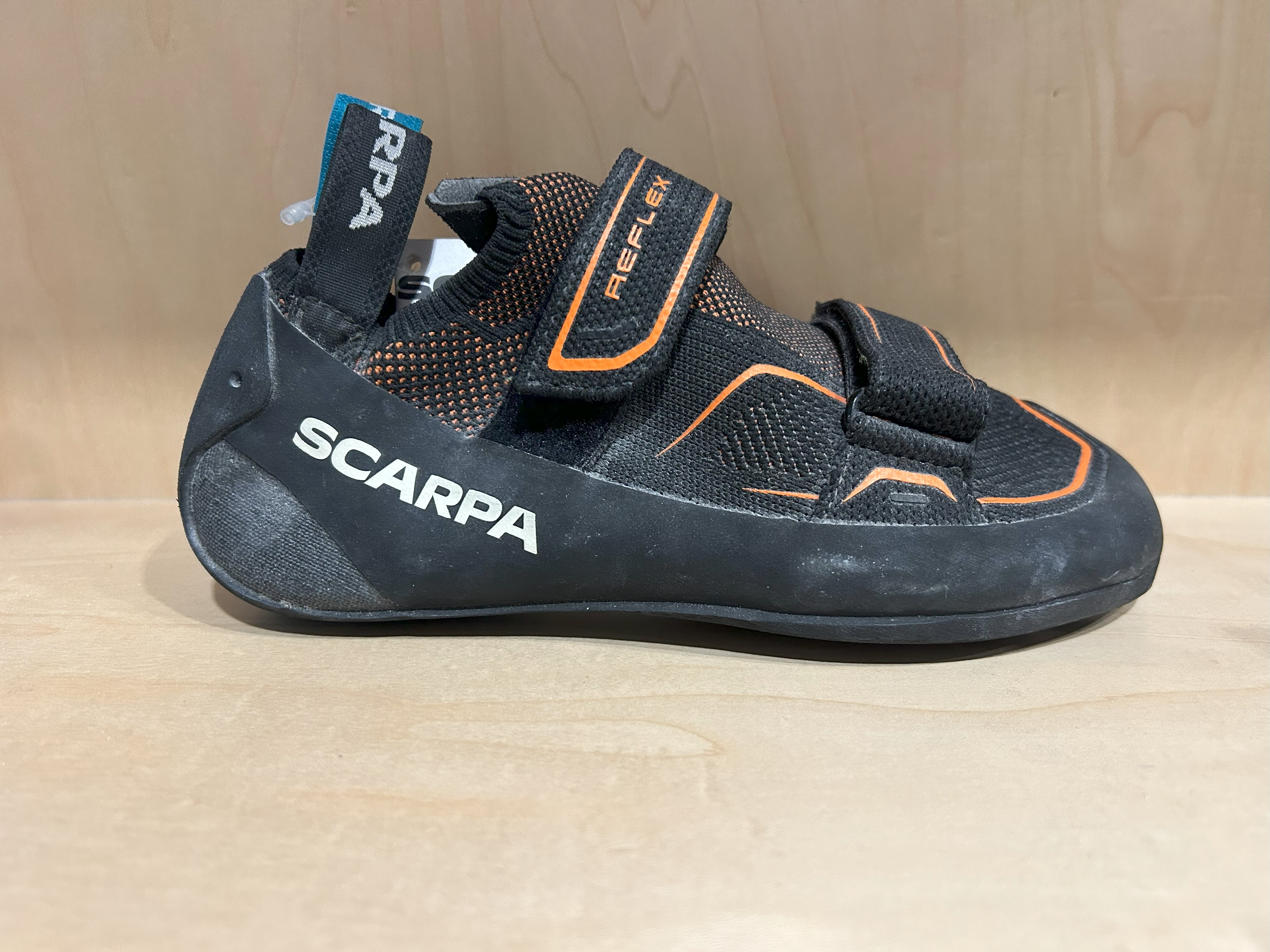
-
Moderate: These shoes have a slight arc.
The qualities are in between a neutral shoe and an aggressive shoe.
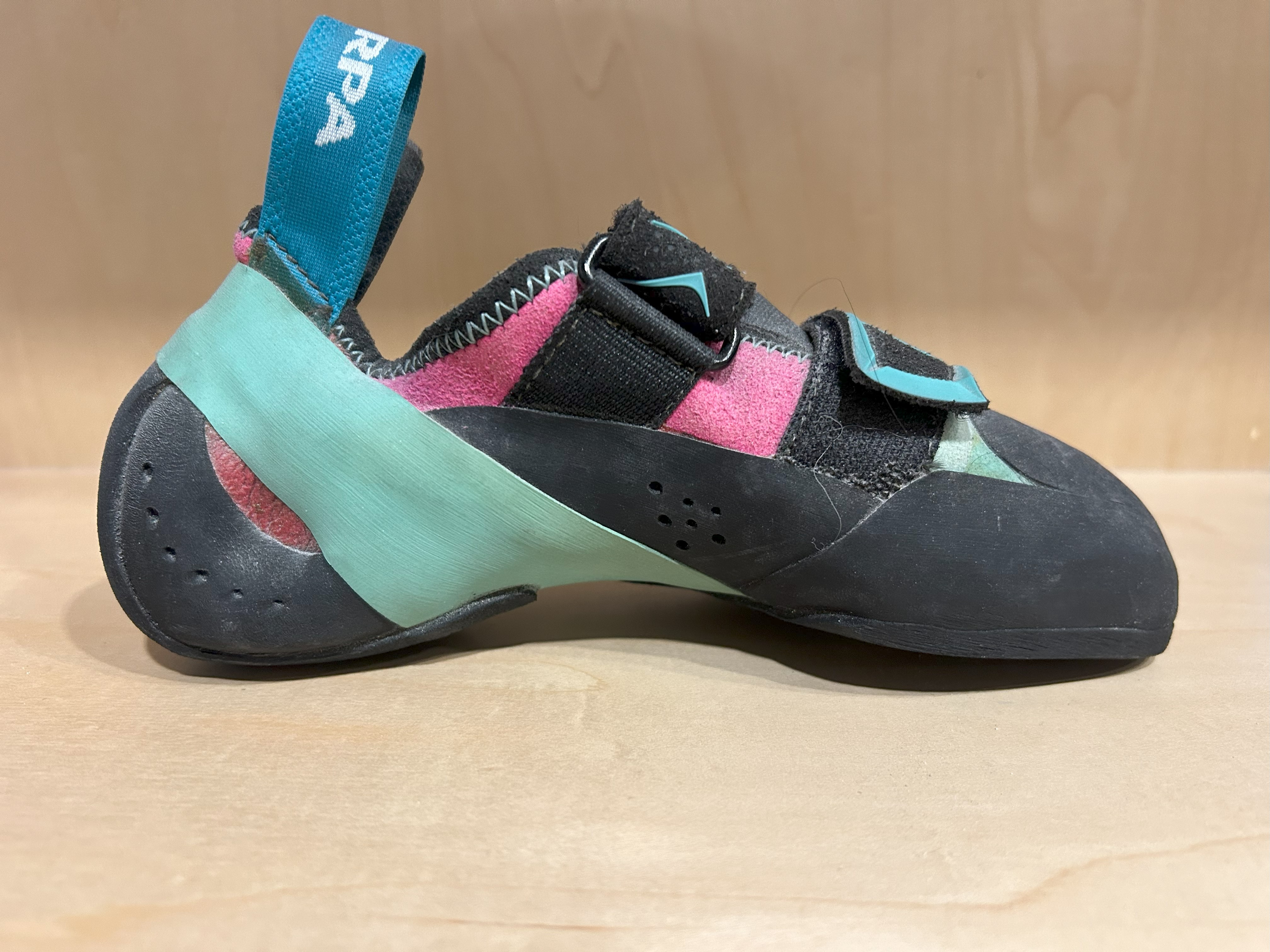
-
Aggressive: These shoes have a downturn toe.
The toe has a sharper point so that it performs better on smaller holds.
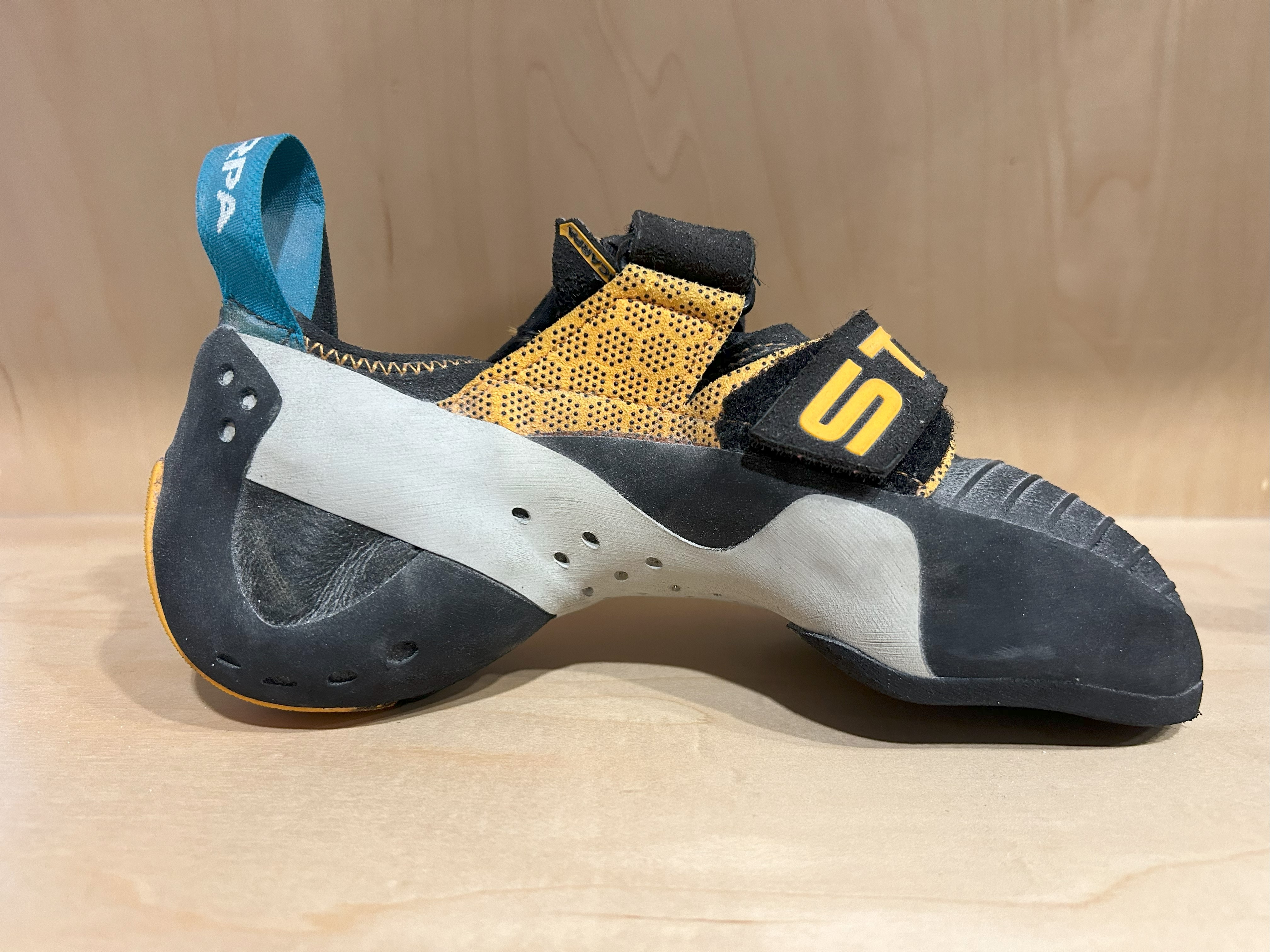
- Soft soles: With soft soles, you can feel the wall more. This is good when you have good technique. Additionally, the soles are super flexible, and the rubber is softer. However, since the rubber is thinner, it can be worn through faster.
- Stiff soles: These soles help with getting on your toe. This is better for learning techniques.
Climbing tape
A type of tape wrapped around fingers to either cover skin or protect it from tearing. This may also be used over bandages to secure them to the body while climbing.
Belay Equipment
Assisted braking
A belay device that helps the climber stop their fall automatically. A common model climbers use is the Grigri.
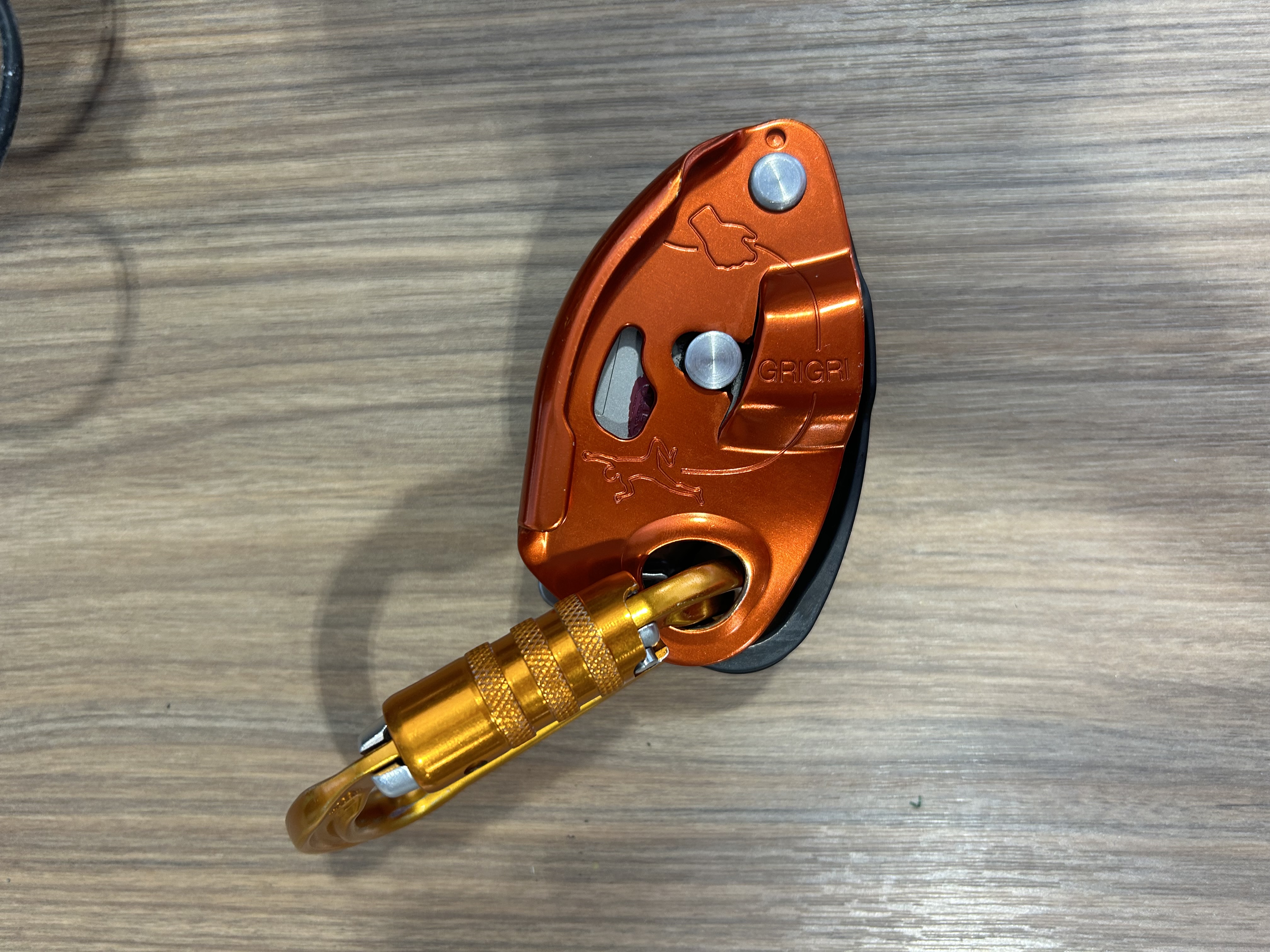
Harness
A piece of equipment that goes around the waist and legs. Climbers connect rope or a tether to it for auto-belay and belay climbs.
Manual braking
A belay device that helps the climber stop their fall when the climber puts themselves in a specific position. An example of this belay device is an ATC (air traffic controller).
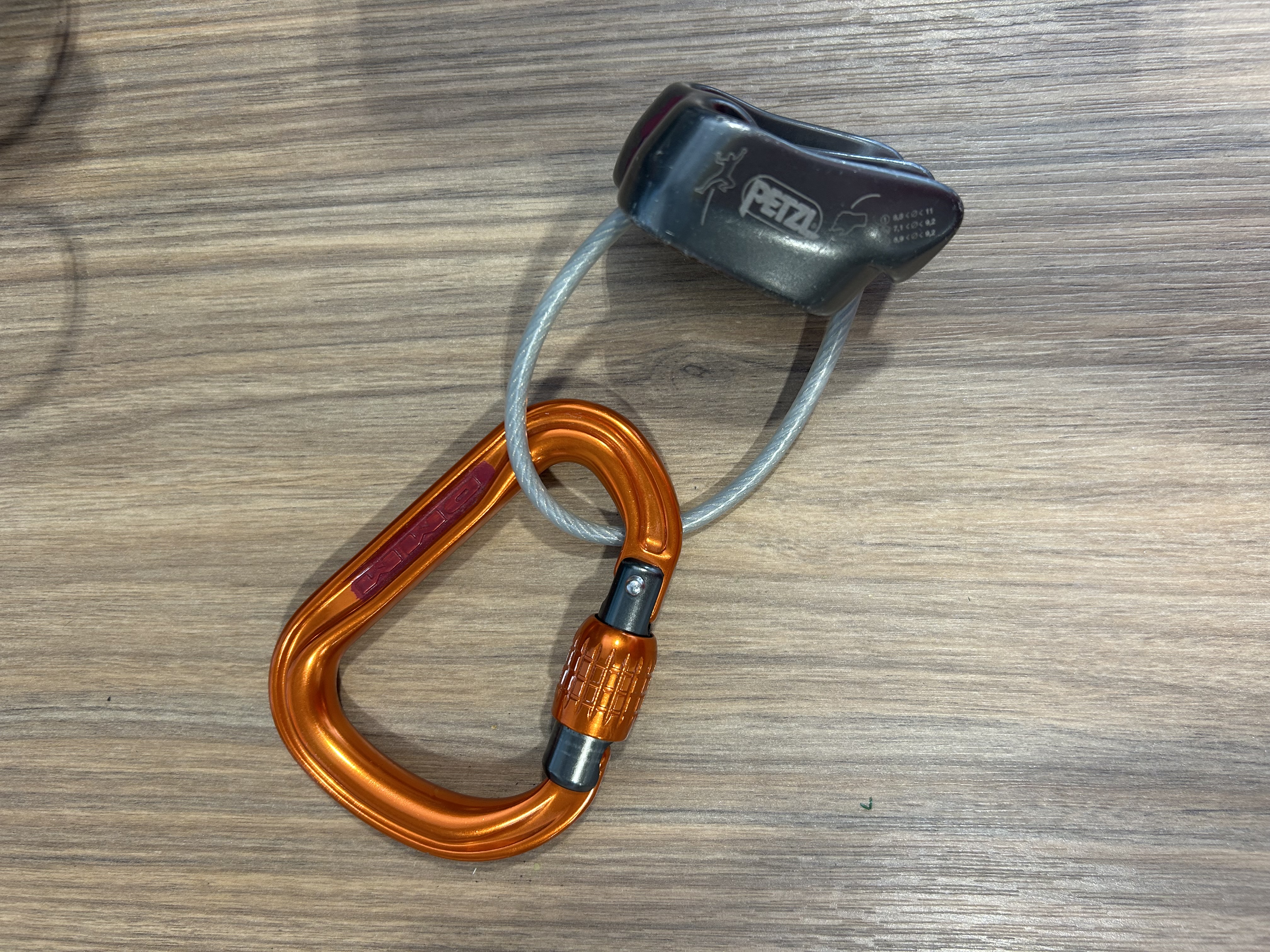
Disclaimer: This website only provides tips for indoor rock climbing. Additionally, individuals must be responsible for their own health and safety.